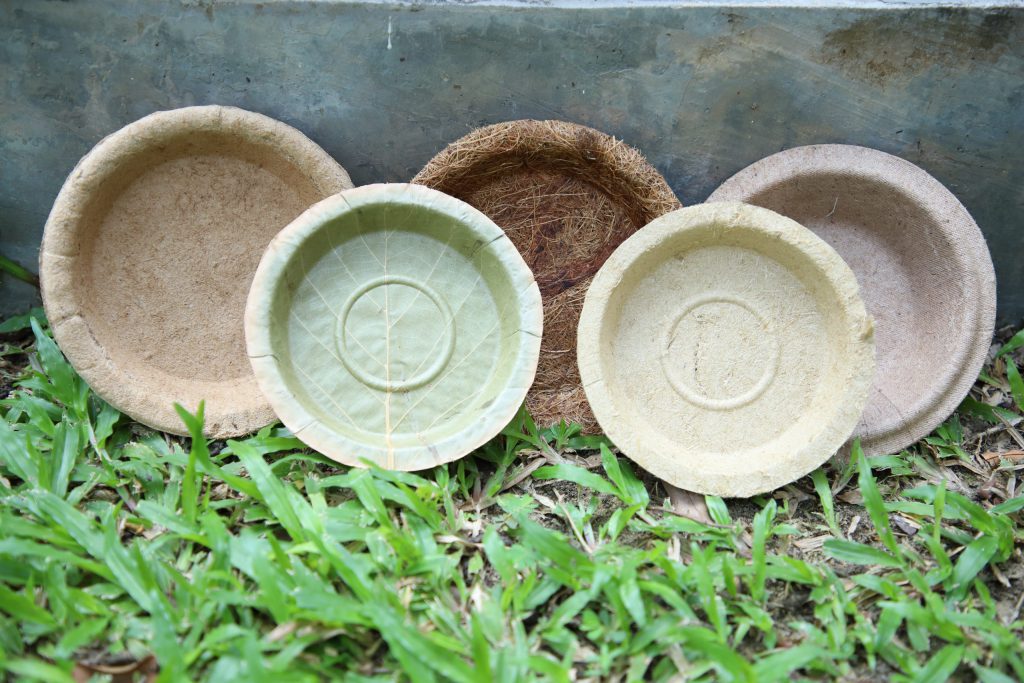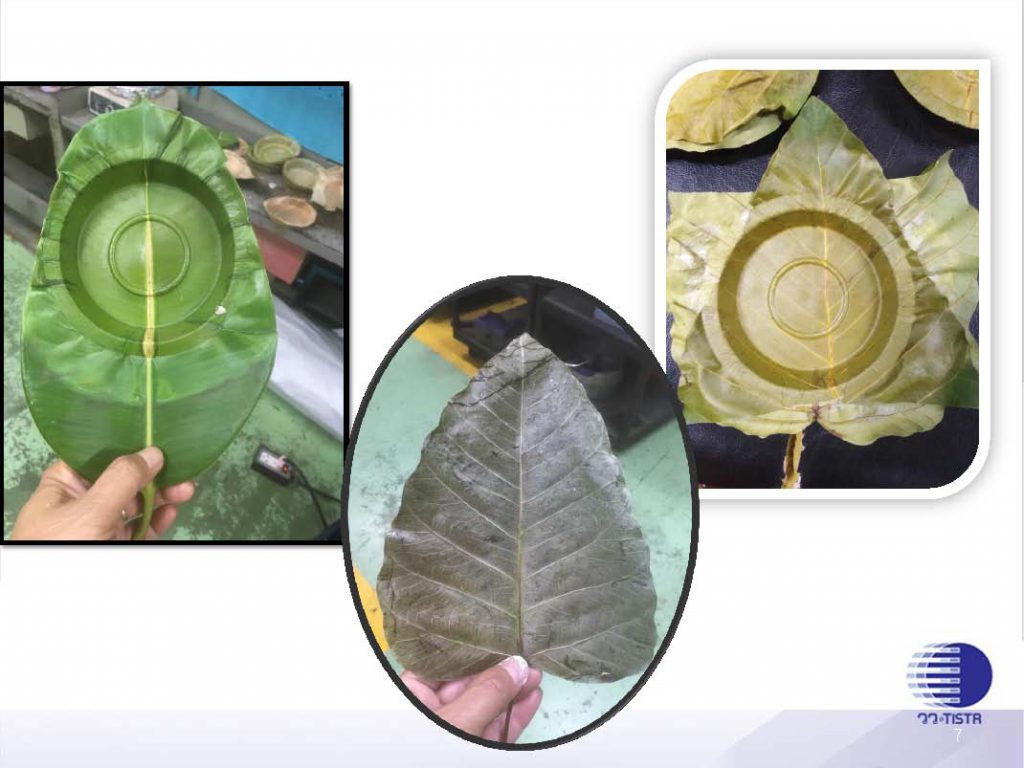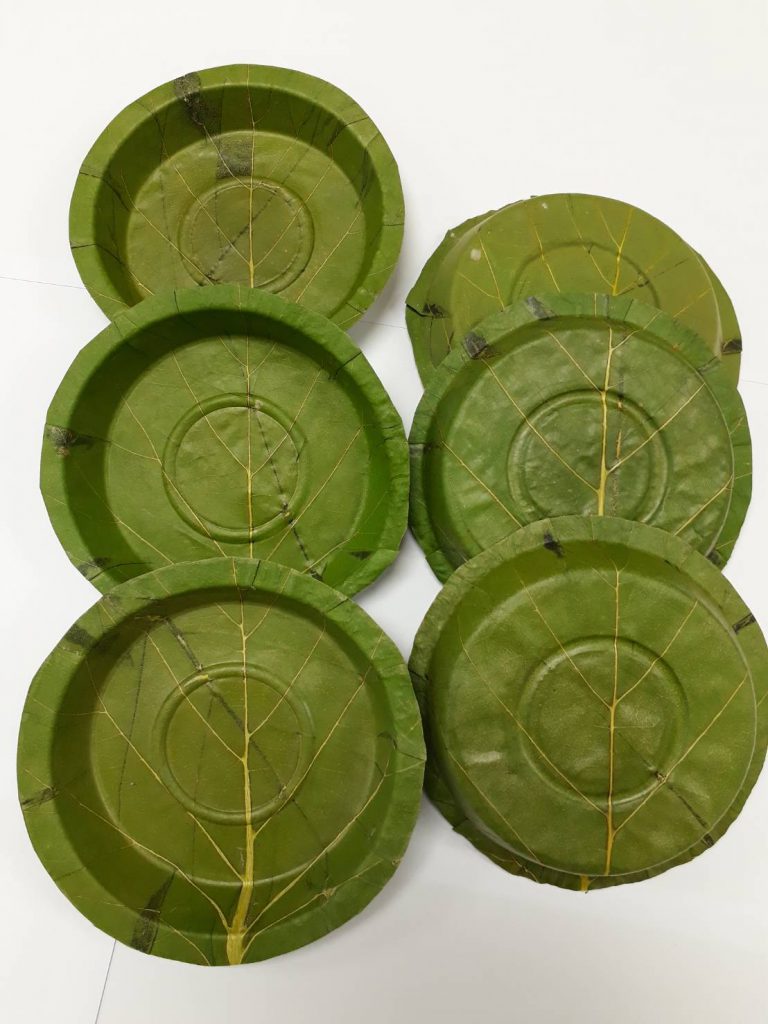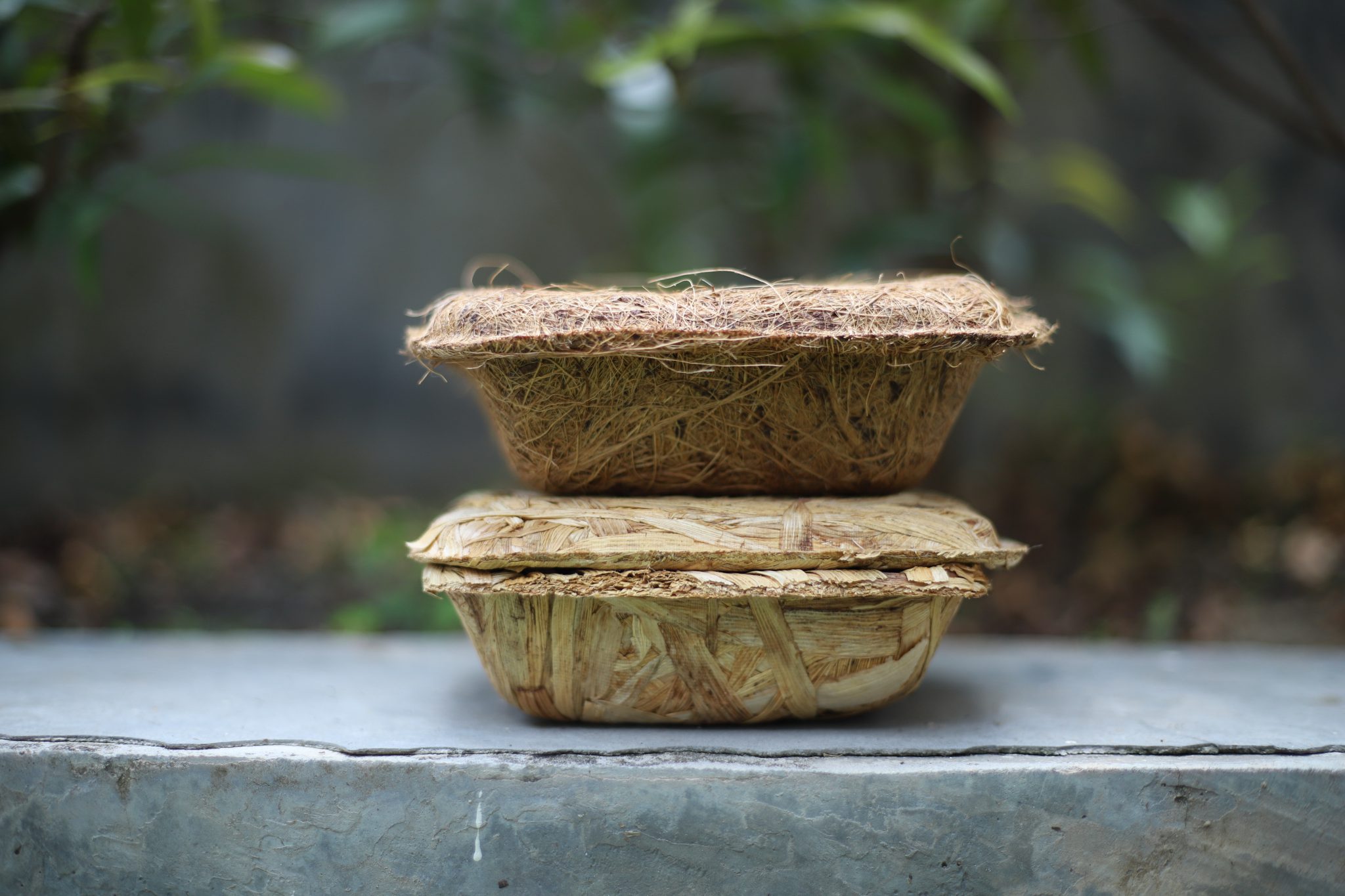
The Expert Centre of Innovative Materials (InnoMat), Thailand Institute of Scientific and Technological Research (TISTR) under the Ministry of Higher Education, Science, Research and Innovation (MHESI) has successfully conducted research and development (R&D) on bio-based packaging made from natural plant leaves and pulps as the substitute materials for the use of plastics. The bio-based packaging is one of the practical research initiatives that can add value to agricultural residue, promote income generation for local communities and Small and Medium Enterprises (SMEs), and drive the Bio-Circular-Green (BCG) Economy Model.

TISTR focuses on the implementation of R&D and integration of science, technology, and innovation (STI) to foster value creation and increase the competitiveness of the national economy. The bio-based packaging is an outcome of the concept of value addition of agricultural residue through the development of various forms of containers that can be usable in daily life. The bio-based packaging delivers environmental, economic, and societal benefits as it is environmentally friendly packaging, helping to create jobs, and generate income for the communities. The advantages of plant leaf and pulp containers are to reduce the use of plastic and foam for food containers and mitigate environmental issues from burning plastic waste, which is one of the root causes of climate change. In addition, with the distinctive feature of producing from natural materials, bio-based packaging has a shelf life of more than 6 months in dry storage without mold. Therefore, bio-based packaging can fulfill consumer demands who care about the environment in the new normal era for convenience and safety, while also improving quality of life.
The production process of bio-based packaging is as follows:
- Use natural materials that can be grown and obtained locally. The natural material may be in the form of plant leaves with the special feature of a large and strong midrib for the stability and strength of the shape of the container after extrusion. Leaves can be extruded by heat, no need to go through the pulping process; such as, Thong Kwao leaves, banana leaves, rubber leaves, etc.
- The containers will be shaped according to molds; such as shallow plates or deep bowls. The composition of leaves’ cutin will make a waterproof dish without adding other substances. It is an easy and cost-saving method.
Small leaves; such as pineapple leaves, banana fibers, and water hyacinth fibers need to be pulped first. Then, it can be extruded by heat. The advantage of plant pulp containers is that they can absorb the oil from fried food, but are not waterproof. The pulp containers can be coated with a thermoplastic synthetic plastic film; such as, polypropylene film and polyethylene film, which is a food-grade film in order to be more effectively functional. The film can be peeled off separately from the pulp containers.

For more information, please contact the Expert Centre of Innovative Materials (InnoMat), TISTR at phone number +662 577 9000, +662 577 9439, website: www.tistr.or.th, email: tistr@tistr.or.th, and Line ID: @TISTR
Views: 205


